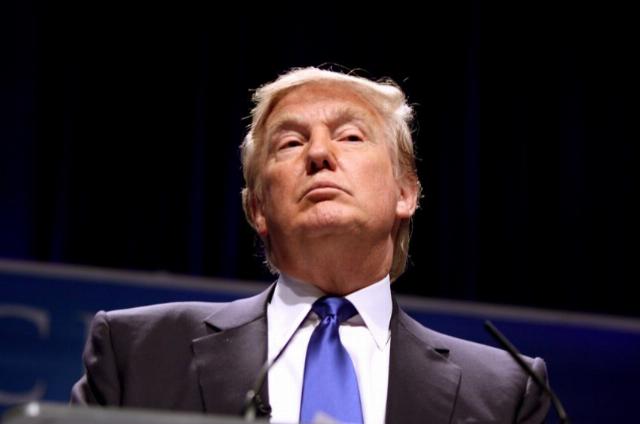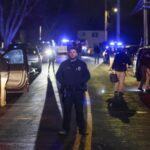

Photo Credit: Image: Gage Skidmore via Flickr, CC BY-SA 2.0.
Gage Skidmore
It seems that the U.S. Secret Service is playing an increasingly dangerous role in U.S. politics.The U.S. Secret Service (USSS), established as a personal bodyguard for U.S. presidents, is playing an increasingly dangerous role in U.S. politics. Assassination attempts on the life of former president Donald Trump, by Ryan Routh on September 18 and Thomas Crooks at Butler, Pennsylvania, raise the disturbing possibility of designed convergences of security lapses that give assassins the opportunity to kill.
Trump’s protective detail was purposefully stretched thin
Details are still missing regarding Routh’s attempt, but he apparently camped out for approximately 12 hours waiting for Trump to appear at hole 6 of the Trump International Golf Club. Trump was headed that way, teeing off at hole 5 when a Secret Service agent saw a rifle sticking through some shrubbery and flushed Routh out with a few shots. There was no prior sweep done of the golf course.
Newly consolidated details on Trump’s Butler rally reveal a more sophisticated plot. Jill Biden spontaneously decided to speak in Pittsburgh on July 13 at a small event, announced only a week prior. Kamala Harris similarly joined a small event in Philadelphia the same day, confirmed as a speaker on July 10. These last-minute additions to “The Schedule” diverted most of Trump’s regular protective detail and breached longstanding White House and USSS security protocols.
Trump’s tall, male USSS regulars were replaced by substantially shorter agents, many of whom were women, borrowed from the Department of Homeland Security (DHS), and whose training consisted of only a two-hour webinar. One of these women cowered behind Trump as he was shot at by Crooks, positioned merely 130 yards away on the roof of building 6 (AGR 6) of the nearby AGR multi-building complex.
Butler security was a wreck. The usual canine teams were missing, improper people were accessing backstage areas, and DHS officials failed to properly patrol the podium area or the “secure perimeter” near the AGR complex, a mistake repeated at Trump’s golf course. Trump had been routinely denied security resources such as sniper teams and additional agents for the previous two years personally by USSS deputy director Ronald Rowe. Rowe became USSS acting director after Kimberly Cheatle’s resignation, becoming responsible for investigating the failed USSS security plan and response to the assassination attempt.
Rowe had personally made cuts to the Counter Surveillance Division (CSD), responsible for venue threat assessment. The CSD had not conducted an evaluation for the Butler rally or even been present the day of. Rowe personally retaliated against agents voicing security concerns leading up to Butler. One whistleblower stated: “If personnel from CSD had been present at the rally, the gunman would have been handcuffed in the parking lot after being spotted with a rangefinder.”
Local resources were similarly stretched. Police were consumed with traffic duty and told USSS they were unable even to station a patrol car in front of the AGR complex. Only three local snipers from the Butler and Beaver County Emergency Services Units (ESU) were assigned to the entire AGR complex, guarding from the second-story window in AGR 7, and one had to leave before the rally.
USSS was offered surveillance drones by the Pennsylvania State Police (PSP) but turned the offer down.
Prior to the Butler rally, USSS leadership made preparations to defensively brace for Butler rally criticism
Whistleblowers told Congress that USSS leadership informally told agents not to request extra security specifically for the Butler rally. This allowed USSS deputy director Rowe to testify to Congress that all security requests for Butler were approved, a dishonest statement that required preparations prior to the rally.
After years of denying USSS snipers to Trump, USSS decided to send two teams to cover barn rooftops behind Trump, assigning them at the last minute and giving them almost no preparation time. Missing was the customary third team, which would have prevented a fan of exposure. Additional problems with their deployment suggest they were security props, approved to ward off suspicion post-assassination.
USSS assets were deployed such that they could not stop shooters
Foiling the September 15 assassination attempt was Ryan Routh’s mistake of poking his rifle barrel out onto the fairway. USSS agents were deployed on the putting green instead of covering all points, allowing the plethora of trees and bushes to be used as cover. Had Routh waited patiently to fire behind cover, agents would have been unable to pinpoint his location, leaving Trump caught in a hail of bullets.
At Butler, the two USSS sniper teams, Hercules 1 and 2, were similarly deployed not to respond to Crooks. USSS posted them behind the protectee instead of overwatching concealed positions such as AGR. Positioned on barns directly behind Trump, the northern team (Hercules 2) was not able to see a specific section of AGR 6 obscured by a tree, where Crooks assembled his weapon and shot Trump.
Hercules 1 was farther away and, though not blocked by a tree, had limited vision of Crooks due to the gentle slope of the AGR 6 rooftop and six-inch ridge cap. Without radio communication, Hercules could not assess in a timely way the real-time location of Crooks despite the latter being flagged, photographed, identified, trailed, chased, and flushed out of cover by local officials.
In fact, real-time communications between local officials and USSS were designed to be impossible from the start. USSS snipers relied on cell phone texts for threat updates, despite experiencing poor cellular reception earlier.
These communications were passed through a pipeline with many single points of failure. Communication from local officers to USSS required a radio transmission to a trailer, a phone call from the trailer to local near USSS command, the local relaying verbally to USSS, which would text Hercules. It is unclear if the local representative was even in the USSS command post shortly before the shooting. PSP commissioner Paris testified that Butler was the first time he had seen such a pipeline.
Were USSS snipers told not to fire at Crooks prior to the shooting? Rowe testified that Hercules killed Crooks as soon as they first saw him, but his testimony was undercut by video released the next day showing Crooks standing upright and running west to east on AGR 7 and transferring to AGR 6 in full view of the crowd, Trump, and USSS snipers.
The most damning decision of all was USSS’s chosen “secure perimeter,” a chain link fence roughly 100 yards north of Trump, stopping just short of the AGR complex. Even nearby rally attendees remarked before the shooting how insecure the site was, yet this choice of perimeter, apparently made by committee, sailed through the multiple stages of checks and reviews by the DHS and USSS. This choice of perimeter allowed USSS to pass responsibility of securing the AGR complex to local Pennsylvania law enforcement. USSS had assigned local SWAT to redundant positions in barns behind Trump, leaving only two local units available to cover the entire AGR complex. These local snipers were not given real-time means to contact USSS, which had refused radios from locals enabling real-time communications.
Contrary to Rowe’s testimony, USSS never told local officials to guard the AGR rooftop.
Mistakes regarding perimeter security, overwatch, aerial surveillance, sweeps, and threat assessment were repeated at Trump’s golf course.
Grant Baker is writing a book on political theory based on Trump’s populist era. You can sign up for updates and support him here.
<img a alt="
Image: Gage Skidmore via <a data-cke-saved-href=" by-sa captext="
Image: Gage Skidmore via Flickr, CC BY-SA 2.0.





